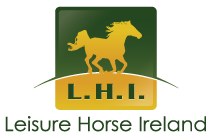New horse identification regulations came into force on January 1, 2016.
Commission Regulation EU 2015-262 has introduced a new passport format to be used throughout the EU which standardises the layout and improves the security features for passports in order to prevent fraud.
The markings must be performed by a VCI registered veterinarian and must meet the standard as laid out under FEI or Weatherbys guidelines.
On LHI passports, the animal UELN, Transponder Number and a typed transcript of the markings written description now appears in Section I Part A on page 3. A certified scan copy of the outline diagram now appears in Section I Part B on page 4. The animal name and breeding details now appears in Section V on page 22.
If you have a horse for breeding or production (ID only type horses), i.e. where breed type and pedigree is not to be recorded, they may now only be identified by an approved Passport Issuing Organisation (PIO) in the State in which the animal is kept.
Both the EU and national regulations confirm that the keeper is ultimately responsible for the identification of a horse. The keeper is also responsible for ensuring that the information contained in the identification document is accurate and up-to-date at all times. Under the new regulations, keepers are responsible for ensuring that horses have the relevant identification documents issued within 12 months from the date of birth of the animal. In this context keepers are required to submit a completed application for a horse passport to an appropriate PIO within 6 months from the date of the horse’s birth. A keeper who fails to comply with the requirement to properly identify a horse commits an offence and is liable on conviction to a fine of up to €5,000.
Keepers are advised to identify horses as soon as is practicable following the birth of the animal as the consequences for late identification include the automatic exclusion of the animal from the food chain. In such circumstances “replacement” passports will be issued which will be marked as such and will confirm the irrevocable exclusion of the animal from the food chain.
Additional responsibilities are placed on keepers with these new regulations to record the introduction of an equine into the State from another EU Member State. This requires the lodgement of the relevant passport with an approved PIO in the State within 30 days of the animal entering the country. Similarly, in the case of horses registered in Studbooks that are resident in the State but were identified by a PIO in another EU Member State, keepers are required to lodge the relevant passport with an appropriate PIO in the State within 30 days. This approach allows for the recording of the horse’s data on the database of the PIO and on the central equine database maintained by DAFM.

